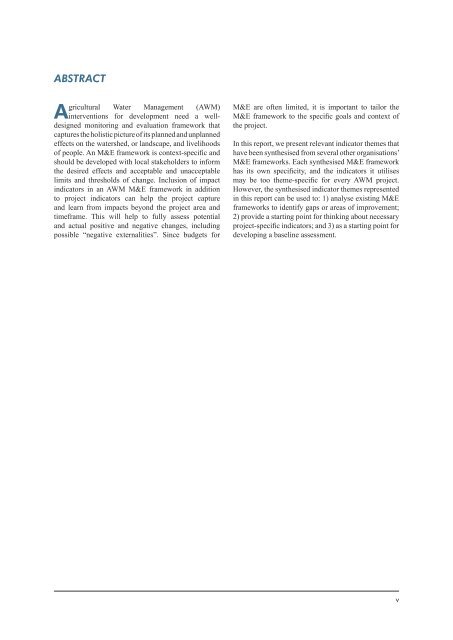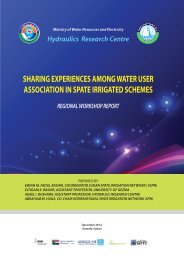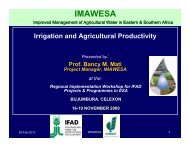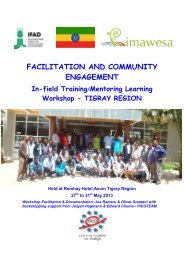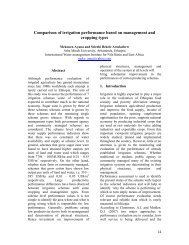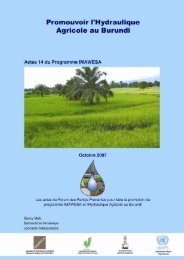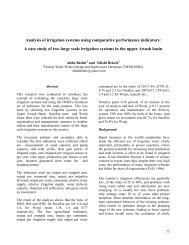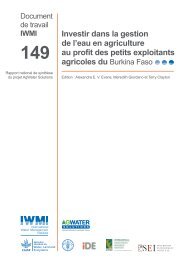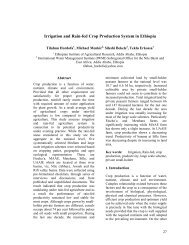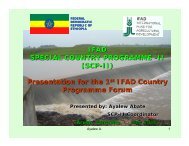Download - IMAWESA
Download - IMAWESA
Download - IMAWESA
You also want an ePaper? Increase the reach of your titles
YUMPU automatically turns print PDFs into web optimized ePapers that Google loves.
Abstract<br />
Agricultural Water Management (AWM)<br />
interventions for development need a welldesigned<br />
monitoring and evaluation framework that<br />
captures the holistic picture of its planned and unplanned<br />
effects on the watershed, or landscape, and livelihoods<br />
of people. An M&E framework is context-specific and<br />
should be developed with local stakeholders to inform<br />
the desired effects and acceptable and unacceptable<br />
limits and thresholds of change. Inclusion of impact<br />
indicators in an AWM M&E framework in addition<br />
to project indicators can help the project capture<br />
and learn from impacts beyond the project area and<br />
timeframe. This will help to fully assess potential<br />
and actual positive and negative changes, including<br />
possible “negative externalities”. Since budgets for<br />
M&E are often limited, it is important to tailor the<br />
M&E framework to the specific goals and context of<br />
the project.<br />
In this report, we present relevant indicator themes that<br />
have been synthesised from several other organisations’<br />
M&E frameworks. Each synthesised M&E framework<br />
has its own specificity, and the indicators it utilises<br />
may be too theme-specific for every AWM project.<br />
However, the synthesised indicator themes represented<br />
in this report can be used to: 1) analyse existing M&E<br />
frameworks to identify gaps or areas of improvement;<br />
2) provide a starting point for thinking about necessary<br />
project-specific indicators; and 3) as a starting point for<br />
developing a baseline assessment.<br />
v


